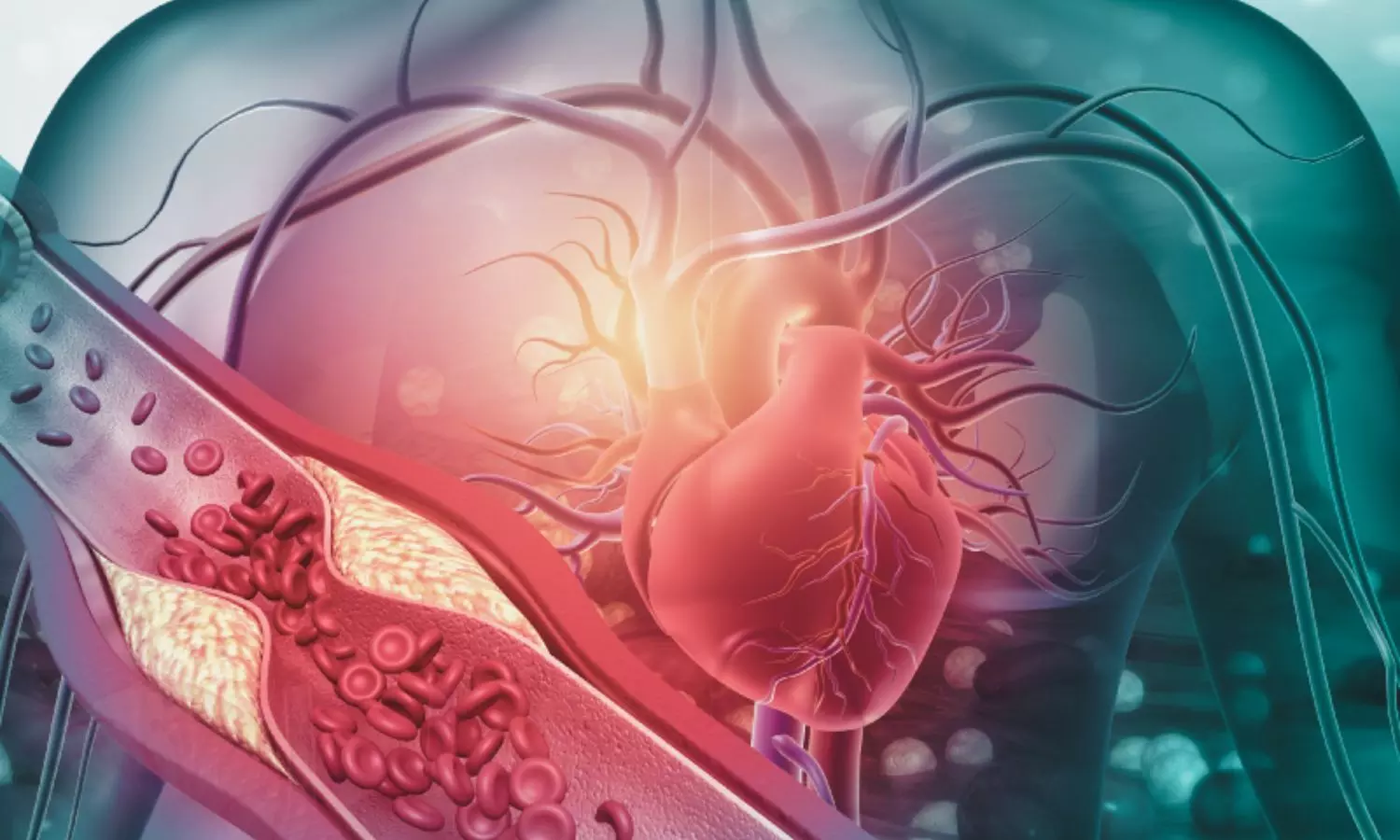Study finds ChatGPT shows promise as medication management tool, could help improve geriatric health care
Powered by WPeMatico
Powered by WPeMatico
Powered by WPeMatico
Powered by WPeMatico
Powered by WPeMatico

Bhopal: Amrita School of Medicine is proud to announce a significant collaboration with All India Institute of Medical Sciences (AIIMS) Bhopal to foster innovation and knowledge exchange in healthcare and medical education. This collaboration was marked by a distinguished interactive session held on Friday under the guidance of Professor Dr.Ajai Singh, Executive Director of AIIMS Bhopal.
The session commenced with a warm welcome address by Professor Jagat R Kanwar, Head of the Department of Biochemistry at AIIMS Bhopal. This set the stage for an insightful exchange of ideas between the two institutions. Following the welcome address, Dr DM Vasudevan, the Dean of Clinical Research at Amrita School of Medicine provided a comprehensive overview of the institution’s progress and goals in the field of medical education and research.
Professor Dr Jaideep Menon, Associate Dean Research of Amrita School of Medicine, then presented the institute’s ongoing clinical and research endeavours. This showcased our unwavering commitment to advancing medical science.
 Also Read:Amrita School of Medicine Holds 18th Graduation Ceremony, 98 MBBS students receive degree certificates
Also Read:Amrita School of Medicine Holds 18th Graduation Ceremony, 98 MBBS students receive degree certificates
A significant gesture of collaboration was witnessed when Professor Rehan ul Haq, Dean Research of AIIMS Bhopal, highlighted their institute’s research achievements and publications from the past year. He emphasized the importance of the recently signed memorandum of understanding (MOU) between the two esteemed institutes.
Further solidifying the bond between the institutions, Professor Vasudevan presented meritorious MBBS and MD Biochemistry students of AIIMS Bhopal with signed copies of his textbook. This symbolizes a shared commitment to academic excellence and knowledge dissemination.
Dr. Sukesh Mukherjee, Additional Professor of Biochemistry and Nodal Officer of the MOU, expressed his gratitude in the vote of thanks. He underscored the importance of the milestones outlined in the MOU and the collaborative efforts towards shaping the future of medical research and education.
This session marks a promising step forward in the collaboration between Amrita School of Medicine and AIIMS Bhopal. By laying a solid foundation for future endeavours in medical research and education, this collaboration will ultimately benefit healthcare and society at large.
Powered by WPeMatico

Prediabetes, also termed
intermediate hyperglycemia or non-diabetic hyperglycemia, a high-risk state for
developing diabetes, is defined by glycaemic variables that are higher than
normal but lower than the thresholds for diabetes. It includes impaired fasting
glucose (IFG) and impaired glucose tolerance (IGT).
According to the
American Diabetes Association (ADA), IFG 100-125 mg/dL (5.6 and 6.9 mmol/L) and
HbA1c 5.7-6.4% (39 and 47 mmol/mol) are diagnostic of prediabetes.
The World
Health Organization (WHO) defines an IGT 140-199 mg/dL (7.8 and 11.0 mmol/L)
and an IFG 110-125 mg/dL (6.1 and 6.9 mmol/L) as intermediate hyperglycemia.
Prediabetes Deserves More Attention
The prevalence of prediabetes is
increasing worldwide. According to the ICMR-INDIAB-17 study, the prevalence
of prediabetes in India is 15.3%, higher than the prevalence of diabetes
(11.4%), which makes prediabetes a bigger problem than type 2 diabetes itself.
The weighted prevalence of IFG (as per WHO cut-off) is much more than the IGT
(10·1% vs 3·3%). IFG prevalence is significantly higher among females and IGT
among males, but with similar trends in urban and rural areas.
Prediabetes Likely to Progress to Diabetes
The annual conversion rate of
prediabetes to diabetes is 5%- 10% (3). About 19.4% of Indian normal glucose
tolerance (NGT) patients developed diabetes, whereas 25.7% developed
prediabetes, a total conversion rate to dysglycemia of 45.1%.
Given these circumstances,
a better awareness of prediabetes could benefit early identification and timely
management, thereby lowering the development of diabetes and associated
complications.
Indian Risk Factors for Prediabetes
Often, the risk of prediabetes
increases with BMI. Obesity and hypertension increase the risk of prediabetes
by 6.75% and 1.35%, respectively, in India.
Other Indian risk factors for
prediabetes include family history of diabetes and gestational diabetes
mellitus, triglycerides (TG) level above 200 mg/dL, and high-density
lipoprotein-cholesterol (HDL-C) level less than 35 mg/dL.
What Other Clinical Risks Ensue If Prediabetes is Not
Treated?
Prediabetes increases the risk of
all-cause mortality and the incidence of cardiovascular outcomes, coronary
heart disease, stroke, chronic kidney disease, cancer, and dementia.
Prediabetes increases the risk of
cardiovascular disease and all-cause mortality. A meta-analysis evaluating the
association between prediabetes and the risk of all-cause mortality and
incident cardiovascular disease indicated that in the general population,
prediabetes was associated with an increased risk of all-cause mortality
(relative risk/RR 1.13), composite cardiovascular disease (RR 1.15), coronary
heart disease (RR 1.16), and stroke (RR 1.14) in a median follow-up time over
9.8 years.
In patients with atherosclerotic cardiovascular disease, prediabetes
increased the risk of all-cause mortality (RR 1.36), composite cardiovascular
disease (RR 1.37), and coronary heart disease (RR 1.15) in a median follow-up
time of 3.2 years.
Therefore, timely screening and proper management of
prediabetes might contribute to primary and secondary prevention of
cardiovascular disease. Diabetic
retinopathy is found to be present in about 6% of Asian Indians with
prediabetes. It is further noted that higher HbA1c values among individuals
with prediabetes doubled the risk for diabetic retinopathy.
Screening of Prediabetes
American Diabetes Association
Standard of Care-2024: The American Diabetes Association Standard
of Care-2024 suggests that the testing for prediabetes should be done in
adults with overweight or obese (BMI ≥25 kg/m2 or ≥23 kg/m2 in Asian American individuals) who have
one or more risk factors, including first-degree relative with diabetes,
history of cardiovascular disease, hypertension (≥130/80 mmHg or on therapy
for hypertension), HDL cholesterol level <35 mg/dL (<0.9 mmol/L) and/or
a triglyceride level >250 mg/dL (>2.8 mmol/L), individuals with
polycystic ovary syndrome, physical inactivity, and other clinical conditions
associated with insulin resistance (e.g., severe obesity, acanthosis
nigricans).
Indian Consensus on Prediabetes: The Indian Consensus Statement on
Approach and Management of Prediabetes in India suggested using the Indian
Diabetes Risk Score (IDRS) to screen prediabetes with clinical risk factors.
The score predicts the probability of diabetes based on four simple parameters:
age, abdominal obesity, family history of diabetes, and physical activity.
Latest International Diabetes
Federation 2024 Position Statement: A new position
statement from the International Diabetes Federation advises using 1-hour
post-load plasma glucose (as defined by plasma glucose ≥ 155 mg/dL [8.6 mmol/L]) to improve the identification of people at
risk for developing T2D, the risk for micro- and macrovascular complications
and mortality, obstructive sleep apnoea, cystic fibrosis-related diabetes
mellitus, metabolic dysfunction-associated steatotic liver disease and
severity of hepatic fibrosis.
The statement also noted that the 1-hour post-load
plasma glucose also provides an opportunity for earlier detection and
intervention in high-risk populations, benefits from lifestyle and
pharmacologic interventions to reduce progression to T2D, and even reduces
diagnostic complexity and confusion with current diagnostic criteria for
intermedia hyperglycemia.
Pharmacotherapy as an Adjunct to Lifestyle Therapy: Lifestyle interventions can modify
the progression of individuals towards overt diabetes, and it is known to
reduce prediabetes by 58%. However, lifestyle interventions are centred around
very intensive diet and adherence.
Pharmacotherapy may be required and
important in patients with severe hyperglycemia, individuals more susceptible
to worsening dysglycemia, developing diabetes, developing CV complications, or
having positive family history of diabetes.
Metformin in Prediabetes: Metformin is the pharmacological agent recommended for preventing
or postponing T2D. The Indian Council of Medical Research (ICMR) and Research
Society for the Study of Diabetes in India (RSSDI) recommend Metformin in
prediabetes primarily for preventing T2D and delaying the onset of T2DM,
secondary prevention of prediabetes, and primordial prevention of vascular ill
health when metformin is given to prediabetes patients to prevent vascular
complications.
The current ADA guidelines state
that metformin should be considered in those with prediabetes, especially with
BMI >35 kg/m2, age above 60 years, women with prior gestational
diabetes mellitus, and individuals where lifestyle intervention is
insufficiently effective in reducing body weight and improving glucose
tolerance. The RSSDI guidelines recommend considering metformin at the dose of
500mg twice daily.
Metformin
is Drug Controller General of India (DCGI) approved in the management of
prediabetes for reducing the risk or delay of the onset of T2DM in adults,
overweight patients with IGT, and/or IFG, and/or increased HbA1C who are at
high risk for developing overt T2DM and still progressing towards T2DM despite
implementing intensive lifestyle changes for 3 to 6 months.
Impact of Prediabetes Awareness Program: Prediabetes awareness and knowledge
are significantly inadequate in India. A survey among Indian individuals with prediabetes showed that 90% had poor knowledge about prediabetes, which
indicated that large-scale prediabetes screening and management programs are
urgently needed.
The survey also noted that implementing prediabetes education
programs increased the self-management skills among people living with
prediabetes. The study concluded that a prediabetes education program could
significantly improve knowledge, attitude, and self-management practices among
Indian people living with prediabetes and could be an effective strategy to
prevent diabetes in this high-risk population.
ACT Against Prediabetes: Practice Pointers
Powered by WPeMatico

USA: Findings from the SHASTA-2 randomized clinical trial (RCT) published in JAMA Cardiology have demonstrated the potential clinical utility of plozasiran to reduce triglyceride (TG) levels in patients with severe hypertriglyceridemia (sHTG).
The phase 2b randomized clinical trial of 229 patients with sHTG revealed that subcutaneously administered plozasiran (dosed on day one and week 12) led to significant placebo-subtracted reductions in mean triglyceride level to −57% and apolipoprotein C3 level to −77% at 24 weeks with a substantial treatment difference persisting at 48 weeks.
Plozasiran demonstrated a generally favorable safety profile.
Severe hypertriglyceridemia, ie, plasma triglyceride level greater than 500 mg/dL is typically multifactorial, involving genetic susceptibility and a combination of lifestyle, diet, drugs, alcohol intake, and/or comorbidities such as obesity, hypothyroidism, and type 2 diabetes. sHTG confers an increased risk of nonalcoholic steatohepatitis, atherosclerotic cardiovascular disease (ASCVD), and acute pancreatitis. Despite available treatments, persistent ASCVD and acute pancreatitis-associated morbidity from sHTG remain.
Against the above background, Christie M. Ballantyne, Texas Heart Institute, Baylor College of Medicine, Houston, Texas, and colleagues aimed to Determine the efficacy, tolerability, and dose of plozasiran, an APOC3-targeted small interfering–RNA (siRNA) drug, for lowering apolipoprotein C3 (APOC3, regulator of triglyceride metabolism) and triglyceride levels. They also evaluated its effects on other lipid parameters in patients with sHTG.
For this purpose, the researchers conducted a placebo-controlled, double-blind, dose-ranging, phase 2b RCT (SHASTA-2) enrolling adults with sHTG at 74 centers across Europe, the US, Australia, New Zealand, and Canada from 2021 to 2023. Eligible patients had fasting triglyceride levels ranging from 500 to 4000 mg/dL while receiving stable lipid-lowering treatment.
Participants received two subcutaneous plozasiran doses (10, 25, or 50 mg) or matched placebo on day one and at week 12 and were followed up through week 48. Of 229 patients, 226 (mean age, 55 years; 78% males) were included in the primary analysis. Baseline mean triglyceride level was 897 mg/dL and plasma APOC3 level was 32 mg/dL.
The primary endpoint evaluated the placebo-subtracted difference in means of percentage triglyceride change at week 24.
The study led to the following findings:
In the RCTS of adults with sHTG, plozasiran treatment led to substantial and durable decreases in triglyceride-rich lipoprotein and TG levels with a favorable tolerability and safety profile in the phase 2 trial of moderate size.
“Our study results support further development of plozasiran for the sHTG treatment and exploration of its effects on important clinical events, such as the reduction of acute pancreatitis,” the researchers wrote. “Moreover, there is a need to study pleiotropic effects of plozasiran on atherogenic lipoproteins thought to promote ASCVD in a larger trial.”
Reference:
Gaudet D, Pall D, Watts GF, et al. Plozasiran (ARO-APOC3) for Severe Hypertriglyceridemia: The SHASTA-2 Randomized Clinical Trial. JAMA Cardiol. Published online April 07, 2024. doi:10.1001/jamacardio.2024.0959
Powered by WPeMatico

A recent study determined that a minimally invasive bariatric procedure called Endoscopic Sleeve Gastroplasty (ESG) is more cost-effective than the latest weight-loss medication, semaglutide, for treating the individuals with class II obesity. This study was conducted from September 2022 to May 2023 which elucidates critical insights into the financial and health impacts of obesity treatments that emphasize the importance of cost in healthcare decisions. The key findings of this study were published in the recent edition of the Journal of American Medical Association.
The study deployed a Markov cohort model to compare the economic and health outcomes of ESG and semaglutide against a no-treatment strategy within the U.S. healthcare system. Adult patients with a body mass index (BMI) between 35 and 39.9 were focused in this analysis. The research centered on a hypothetical base case of a 45-year-old patient with a BMI of 37 undergoing either of the treatments.
ESG proved to achieve more substantial weight loss over a five-year period and demonstrated significant cost savings. The findings reveal that ESG had an incremental cost-effectiveness ratio (ICER) of -$595,532 per quality-adjusted life year (QALY), in common terms it saved more money while adding more quality life years when compared to semaglutide. Also, ESG added 0.06 QALYs and reduced the total healthcare costs by $33,583 relative to semaglutide.
Semaglutide is a glucagon-like peptide-1 receptor agonist and has been known for its efficacy in recent times but comes with a heavy price tag. Currently priced at $13,618 annually, this research suggests that to be on par with ESG, the cost of semaglutide would need to plummet to $3,591 per year which is a reduction by nearly threefold. The research employed rigorous statistical analyses to ensure the robustness of the outcomes observed. These analyses consistently supported the superior cost-effectiveness of ESG over the five-year horizon considered.
This study underlines the necessity for a strategic evaluation of treatment options in obesity management in light of the growing global adoption of various obesity treatments. The research advocates for a broader consideration of cost-effectiveness in public health decisions by highlighting the economic advantages of ESG and potentially influencing the policy changes moving forward. Healthcare providers, policymakers and patients may find these findings invaluable as they navigate the complex landscape of treatments available to manage obesity in a effective and economically sustainable way.
Reference:
Haseeb, M., Chhatwal, J., Xiao, J., Jirapinyo, P., & Thompson, C. C. (2024). Semaglutide vs Endoscopic Sleeve Gastroplasty for Weight Loss. In JAMA Network Open (Vol. 7, Issue 4, p. e246221). American Medical Association (AMA). https://doi.org/10.1001/jamanetworkopen.2024.6221
Powered by WPeMatico

Germany: A systematic review published in Nutrients has shed light on the impact of acute and chronic exercise on appetite and appetite regulation in patients with prediabetes or type 2 diabetes mellitus (T2DM).
The review of seven studies involving individuals with prediabetes or Type 2 diabetes found that chronic exercise may be associated with reduced appetite. The findings showed aerobic endurance exercise like brisk walking done consistently for 150 minutes weekly or more was most likely to lead to reduced hunger and increased satiety in participants diagnosed with diabetes.
The study results provided more evidence for an appetite-reducing rather than an appetite-increasing effect of (chronic) exercise on patients with prediabetes or T2DM.
Prediabetes and T2DM represent significant public health concerns globally, with their prevalence on the rise. Lifestyle interventions, including exercise, are important in managing these conditions. However, understanding the influence of exercise on appetite regulation in individuals with prediabetes or T2DM is crucial for optimizing treatment strategies.
Against the above background, Christoph Konitz, German Sport University Cologne, Cologne, Germany, and colleagues aimed to analyze the effects of acute and chronic exercise on appetite and appetite regulation in patients with abnormal glycemic control.
For this purpose, the researchers searched online databases for eligible studies. The included studies had to report assessments of appetite (primary outcome). Appetite-regulating hormone levels were analyzed as secondary outcomes (considered, if additionally reported).
Seven studies with a total of 211 patients with prediabetes or type 2 diabetes mellitus met the inclusion criteria.
The researchers reported the following findings:
“The present results provide more evidence for an appetite-reducing rather than an appetite-increasing effect of (chronic) exercise on patients with T2DM or prediabetes,” the researchers wrote.
The researchers suggest that practitioners should, however, consider possible inter-individual differences in appetite responses to exercise.
“It is necessary to conduct studies on the effects of training interventions on appetite that also examine changes in free-living energy intake and components of energy expenditure to draw definite conclusions about the effectiveness of exercise in impacting long-term energy balance,” they concluded.
Reference:
Konitz, C., Schwensfeier, L., Predel, H., & Brinkmann, C. (2023). The Influence of Acute and Chronic Exercise on Appetite and Appetite Regulation in Patients with Prediabetes or Type 2 Diabetes Mellitus—A Systematic Review. Nutrients, 16(8), 1126. https://doi.org/10.3390/nu16081126
Powered by WPeMatico

USA: Findings from the INSTANT phase 2 trial showed that orally inhaled flecainide passed muster for converting atrial fibrillation (AF) to sinus rhythm. The findings were published online in JACC: Clinical Electrophysiology on April 10, 2024.
INSTANT was an open-label, multicenter, single-arm study of flecainide acetate oral inhalation solution (FlecIH) for acute conversion of recent-onset (≤48 hours) symptomatic atrial fibrillation to sinus rhythm.
The researchers reported that the risk-benefit of orally inhaled FlecIH for acute cardioversion of recent-onset AF appears favorable; suggesting that FlecIH could provide an effective, safe, and convenient first-line therapeutic option.
Atrial fibrillation is characterized by irregular and often rapid heart rate and poses substantial risks of stroke, heart failure, and other cardiovascular complications. While several pharmacological and interventional strategies exist for managing AF, achieving and maintaining sinus rhythm remains a cornerstone of therapy to mitigate associated morbidity and mortality.
Atrial fibrillation stands as one of the most prevalent cardiac arrhythmias worldwide, with its management presenting a significant challenge in clinical practice. Amidst this backdrop, the emerging use of orally inhaled flecainide offers a beacon of hope for restoring sinus rhythm in patients with AF.
Against the above background, Jeremy N. Ruskin, Cardiac Arrhythmia Service GRB 8, Massachusetts General Hospital, Boston, Massachusetts, USA, and colleagues aimed to investigate the safety and efficacy in 98 patients receiving a single dose of FlecIH delivered via oral inhalation. The mean age of the patients was 60.5 years, the mean body mass index was 27.0 kg/m2, and 34.7% were women.
Patients self-administered flecainide acetate oral inhalation solution over 8 minutes, using a breath-actuated nebulizer, in a supervised medical setting and were continuously monitored for 90 minutes using a 12-lead Holter.
The researchers reported the following findings:
· All patients had ≥1 AF-related symptom at baseline, and 87.8% had AF symptoms for ≤24 hours.
· The conversion rate was 42.6% with a median time to conversion of 14.6 minutes.
· The conversion rate was 46.9% in a subpopulation that excluded predose flecainide exposure for the current AF episode.
· Median time to discharge among patients who converted was 2.5 hours, and only 2 patients had experienced AF recurrence by day 5.
· In the conversion-no group, 81.5% of patients underwent electrical cardioversion by day 5.
· The most common adverse events were related to oral inhalation of flecainide (eg, cough, oropharyngeal irritation/pain), which were mostly of mild intensity and limited duration.
In conclusion, the risk-benefit of orally inhaled flecainide acetate for acute cardioversion of recent-onset AF is favorable and could provide an effective, safe, and convenient first-line therapeutic option for the conversion of recent-onset AF.
“The delivery of flecainide by oral inhalation in the hospital/ED setting holds the potential to provide a rapid and practical treatment, reducing rates of hospitalization and health care costs,” the researchers wrote. “There is a need for further studies to confirm the current study findings on the clinical effectiveness and safety of inhaled flecainide.”
Reference:
Ruskin JN, Camm AJ, Dufton C, Woite-Silva AC, Tuininga Y, Badings E, De Jong JSSG, Oosterhof T, Aksoy I, Kuijper AFM, Van Gelder IC, van Dijk V, Nuyens D, Schellings D, Lee MY, Kowey PR, Crijns HJGM, Maupas J, Belardinelli L; INSTANT Investigators. Orally Inhaled Flecainide for Conversion of Atrial Fibrillation to Sinus Rhythm: INSTANT Phase 2 Trial. JACC Clin Electrophysiol. 2024 Mar 26:S2405-500X(24)00164-6. doi: 10.1016/j.jacep.2024.02.021. Epub ahead of print. PMID: 38613545.
Powered by WPeMatico
